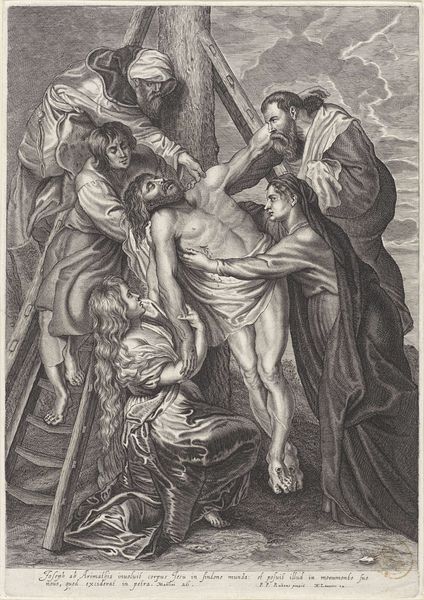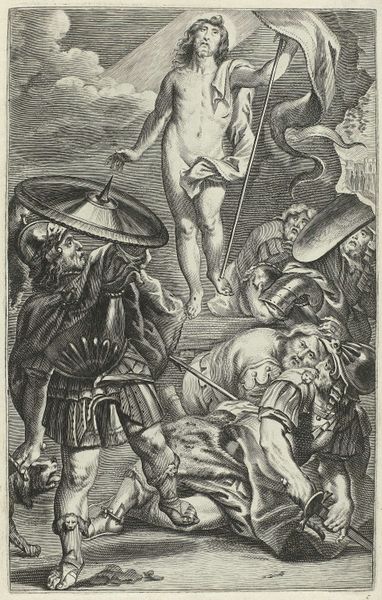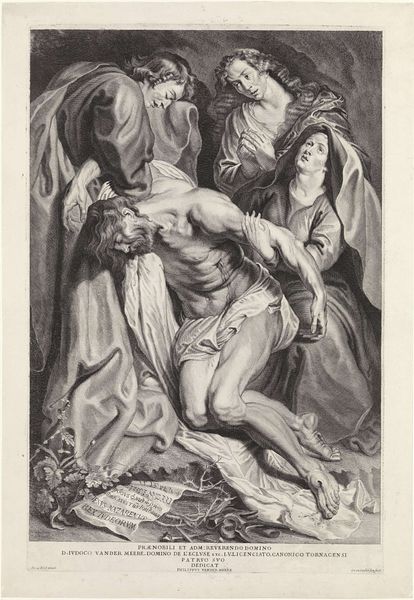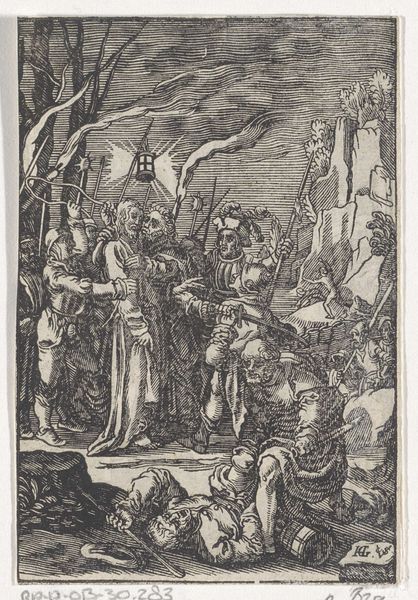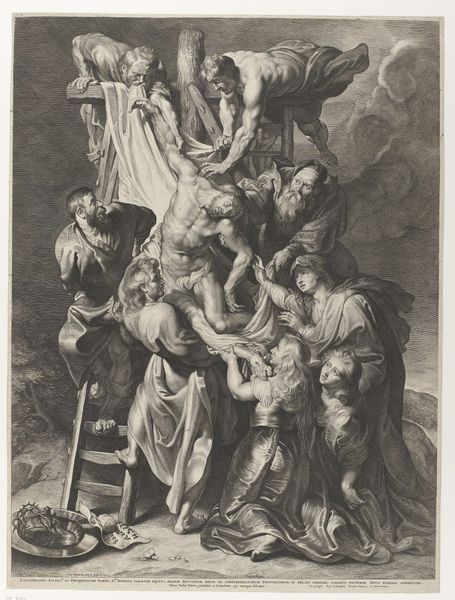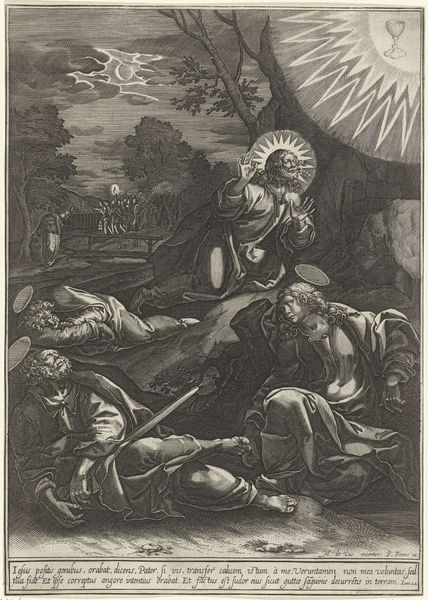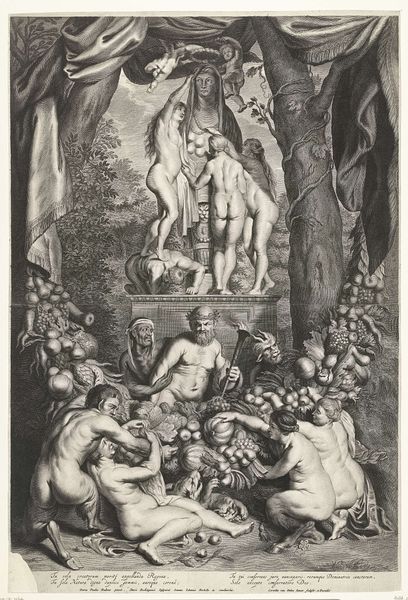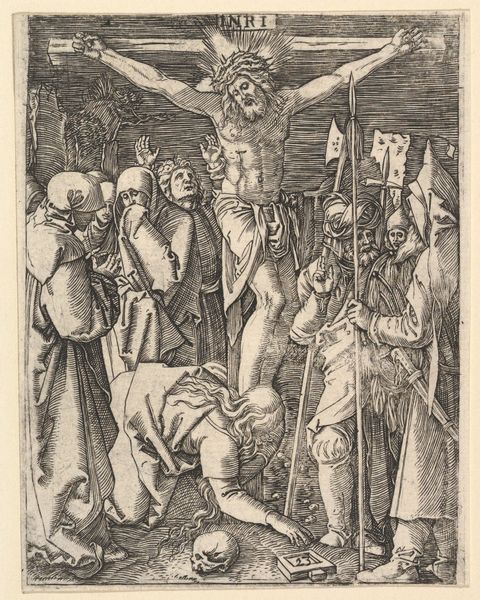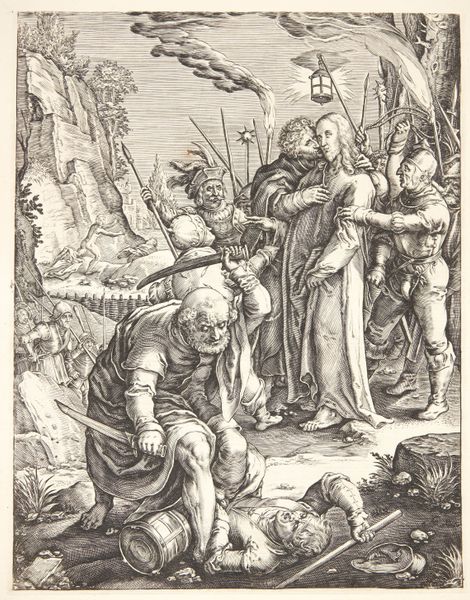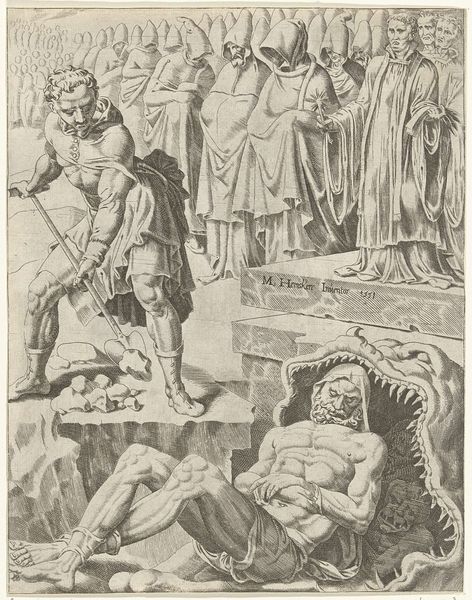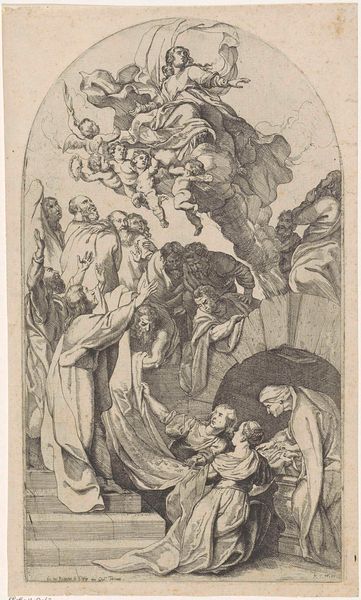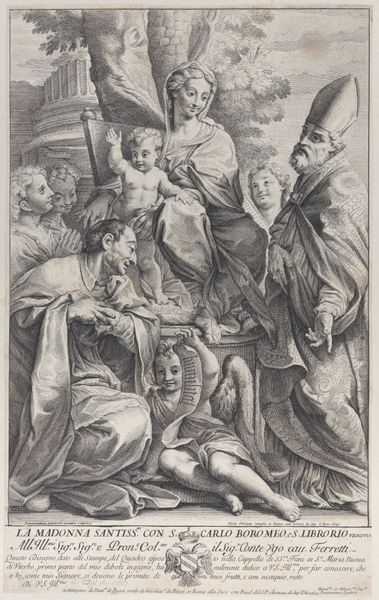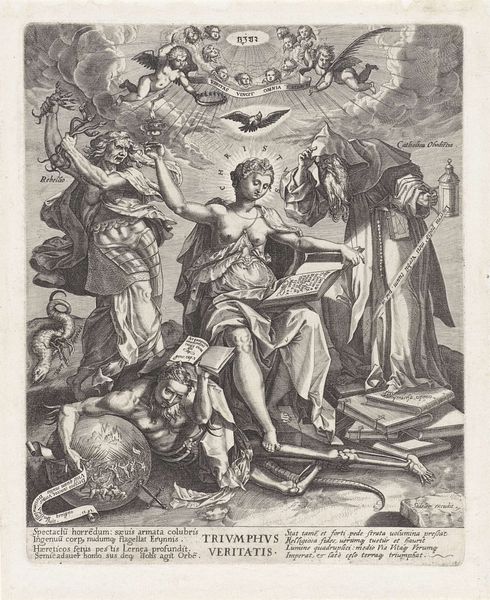
print, engraving
#
baroque
# print
#
figuration
#
line
#
history-painting
#
engraving
Dimensions: height 124 mm, width 83 mm
Copyright: Rijks Museum: Open Domain
Curator: Let's discuss this intriguing engraving by Theodor van Merlen, dating from between 1619 and 1672, titled “H. Norbert.” Editor: It strikes me as incredibly busy. The density of the linework is quite something, and the contrast heightens the drama considerably. I notice how Saint Norbert, right there in the center, appears almost radiant amidst the chaotic figures below. Curator: Indeed. This is a classic example of Baroque visual rhetoric, aiming to convey the saint’s power and spiritual authority. Van Merlen likely intended to present Norbert as a symbol of triumph, which might resonate with specific cultural values. Consider, too, how prints at this time played a vital role in disseminating religious and political messages. Editor: It’s impossible not to notice the prostrate figures, in chains it looks like they were defeated by Saint Norbert. We're compelled to acknowledge labor and, if we look close, even what kind of sweat it took to carve those lines in service of religious authority. I see almost an industry in those symbolic engravings to convey religious virtue in such an assertive way. Curator: A fascinating insight! It would also be of use to examine the sources which informed Merlen's iconography, looking for textual and visual precursors to his rendering of the saint and his attributes, to unpack a greater understanding of religious and visual traditions of the day. Editor: Yes, and think too of the engraver's craft here—how the act of physically carving the image into a plate enabled the widespread distribution of such ideological content to a wide population. You see, its potency wasn’t solely visual; it lay in the repeatable, tangible nature of print. I cannot ignore all those chains though... Are the people at that period really interpreting virtue via subjegation? Curator: Perhaps van Merlen intended a warning of sorts. By illustrating divine triumph so graphically, he might’ve wanted to affirm social and religious stability within a context of Reformation-era instability. Editor: I suppose that by dissecting these engravings we aren't merely appreciating lines on paper; rather, we're unearthing processes where material production helped propagate beliefs that still stir questions within.
Comments
No comments
Be the first to comment and join the conversation on the ultimate creative platform.

